Intel 3rd Gen Xeon Scalable (Ice Lake SP) Review: Generationally Big, Competitively Small
by Andrei Frumusanu on April 6, 2021 11:00 AM EST- Posted in
- Servers
- CPUs
- Intel
- Xeon
- Enterprise
- Xeon Scalable
- Ice Lake-SP
SPECjbb MultiJVM - Java Performance
Moving on from SPECCPU, we shift over to SPECjbb2015. SPECjbb is a from ground-up developed benchmark that aims to cover both Java performance and server-like workloads, from the SPEC website:
“The SPECjbb2015 benchmark is based on the usage model of a worldwide supermarket company with an IT infrastructure that handles a mix of point-of-sale requests, online purchases, and data-mining operations. It exercises Java 7 and higher features, using the latest data formats (XML), communication using compression, and secure messaging.
Performance metrics are provided for both pure throughput and critical throughput under service-level agreements (SLAs), with response times ranging from 10 to 100 milliseconds.”
The important thing to note here is that the workload is of a transactional nature that mostly works on the data-plane, between different Java virtual machines, and thus threads.
We’re using the MultiJVM test method where as all the benchmark components, meaning controller, server and client virtual machines are running on the same physical machine.
The JVM runtime we’re using is OpenJDK 15 on both x86 and Arm platforms, although not exactly the same sub-version, but closest we could get:
EPYC & Xeon systems:
openjdk 15 2020-09-15
OpenJDK Runtime Environment (build 15+36-Ubuntu-1)
OpenJDK 64-Bit Server VM (build 15+36-Ubuntu-1, mixed mode, sharing)
Altra system:
openjdk 15.0.1 2020-10-20
OpenJDK Runtime Environment 20.9 (build 15.0.1+9)
OpenJDK 64-Bit Server VM 20.9 (build 15.0.1+9, mixed mode, sharing)
Furthermore, we’re configuring SPECjbb’s runtime settings with the following configurables:
SPEC_OPTS_C="-Dspecjbb.group.count=$GROUP_COUNT -Dspecjbb.txi.pergroup.count=$TI_JVM_COUNT -Dspecjbb.forkjoin.workers=N -Dspecjbb.forkjoin.workers.Tier1=N -Dspecjbb.forkjoin.workers.Tier2=1 -Dspecjbb.forkjoin.workers.Tier3=16"
Where N=160 for 2S Altra test runs, N=80 for 1S Altra test runs, N=112 for 2S Xeon 8280, N=56 for 1S Xeon 8280, and N=128 for 2S and 1S on the EPYC system. The 75F3 system had the worker count reduced to 64 and 32 for 2S/1S runs.
The Xeon 8380 was running at N=140 for 2S Xeon 8380 and N=70 for 1S - the benchmark had been erroring out at higher thread counts.
In terms of JVM options, we’re limiting ourselves to bare-bone options to keep things simple and straightforward:
EPYC & Altra systems:
JAVA_OPTS_C="-server -Xms2g -Xmx2g -Xmn1536m -XX:+UseParallelGC "
JAVA_OPTS_TI="-server -Xms2g -Xmx2g -Xmn1536m -XX:+UseParallelGC"
JAVA_OPTS_BE="-server -Xms48g -Xmx48g -Xmn42g -XX:+UseParallelGC -XX:+AlwaysPreTouch"
Xeon Cascade Lake systems:
JAVA_OPTS_C="-server -Xms2g -Xmx2g -Xmn1536m -XX:+UseParallelGC"
JAVA_OPTS_TI="-server -Xms2g -Xmx2g -Xmn1536m -XX:+UseParallelGC"
JAVA_OPTS_BE="-server -Xms172g -Xmx172g -Xmn156g -XX:+UseParallelGC -XX:+AlwaysPreTouch"
Xeon Ice Lake systems (SNC1):
JAVA_OPTS_C="-server -Xms2g -Xmx2g -Xmn1536m -XX:+UseParallelGC"
JAVA_OPTS_TI="-server -Xms2g -Xmx2g -Xmn1536m -XX:+UseParallelGC"
JAVA_OPTS_BE="-server -Xms192g -Xmx192g -Xmn168g -XX:+UseParallelGC -XX:+AlwaysPreTouch"
Xeon Ice Lake systems (SNC2):
JAVA_OPTS_C="-server -Xms2g -Xmx2g -Xmn1536m -XX:+UseParallelGC"
JAVA_OPTS_TI="-server -Xms2g -Xmx2g -Xmn1536m -XX:+UseParallelGC"
JAVA_OPTS_BE="-server -Xms96g -Xmx96g -Xmn84g -XX:+UseParallelGC -XX:+AlwaysPreTouch"
The reason the Xeon CLX system is running a larger back-end heap is because we’re running a single NUMA node per socket, while for the Altra and EPYC we’re running four NUMA nodes per socket for maximised throughput, meaning for the 2S figures we have 8 backends running for the Altra and EPYC and 2 for the Xeon, and naturally half of those numbers for the 1S benchmarks.
For the Ice Lake system, I ran both SNC1 (one NUMA node) as SNC2 (two nodes), with the corresponding scaling in the back-end memory allocation.
The back-ends and transaction injectors are affinitised to their local NUMA node with numactl –cpunodebind and –membind, while the controller is called with –interleave=all.
The max-jOPS and critical-jOPS result figures are defined as follows:
"The max-jOPS is the last successful injection rate before the first failing injection rate where the reattempt also fails. For example, if during the RT-curve phase the injection rate of 80000 passes, but the next injection rate of 90000 fails on two successive attempts, then the max-jOPS would be 80000."
"The overall critical-jOPS is computed by taking the geomean of the individual critical-jOPS computed at these five SLA points, namely:
• Critical-jOPSoverall = Geo-mean of (critical-jOPS@ 10ms, 25ms, 50ms, 75ms and 100ms response time SLAs)
During the RT curve building phase the Transaction Injector measures the 99th percentile response times at each step level for all the requests (see section 9) that are considered in the metrics computations. It then computes the Critical-jOPS for each of the above five SLA points using the following formula:
(first * nOver + last * nUnder) / (nOver + nUnder) "
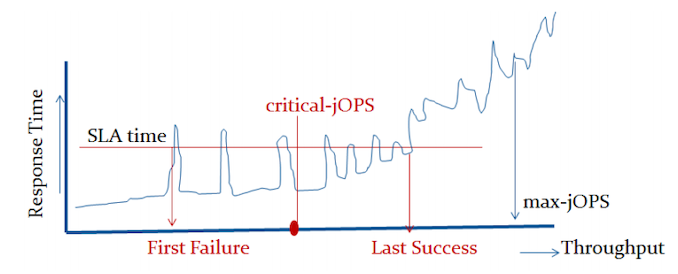
That’s a lot of technicalities to explain an admittedly complex benchmark, but the gist of it is that max-jOPS represents the maximum transaction throughput of a system until further requests fail, and critical-jOPS is an aggregate geomean transaction throughput within several levels of guaranteed response times, essentially different levels of quality of service.
Beyond the result figures, the benchmark keeps detailed track of timings of responses and tracks a few important statistical data-points across a response-time curve, as follows:
Comparing the Xeon 8380 to the Xeon 8280, what’s to be immediately noted is the much-improved maximum throughput figure of the new part, scaling at +64% compared to its predecessor. We’re seeing that the load slope where the 99th percentile SLA figures rises comes in at a relative earlier point, and the corresponding critical-jOPS point lands in relatively earlier than the Xeon 8280.
I included the AMD EPYC 7763 and Altra graphs for context.
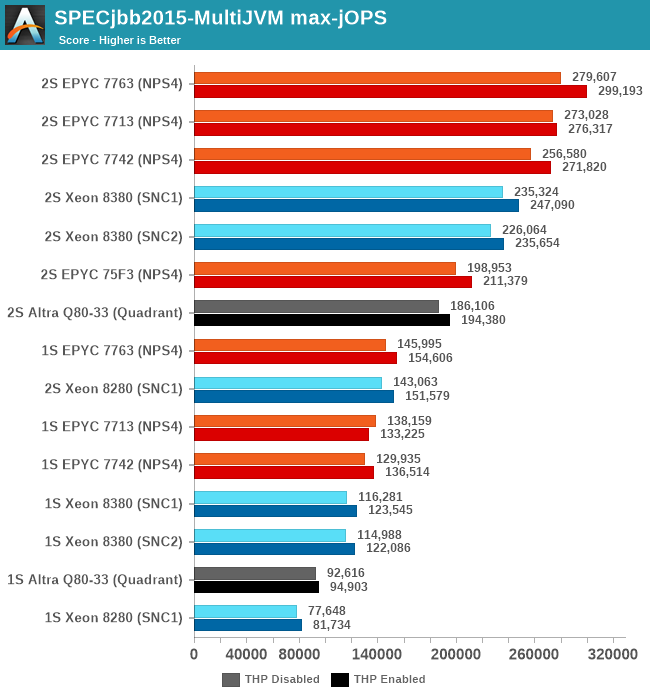
My theory here is that because of the good per-core performance of the Intel design, along with the monolithic mesh architecture, while Intel doesn’t quite catch up with AMD, it performs very well with relatively significantly fewer cores.
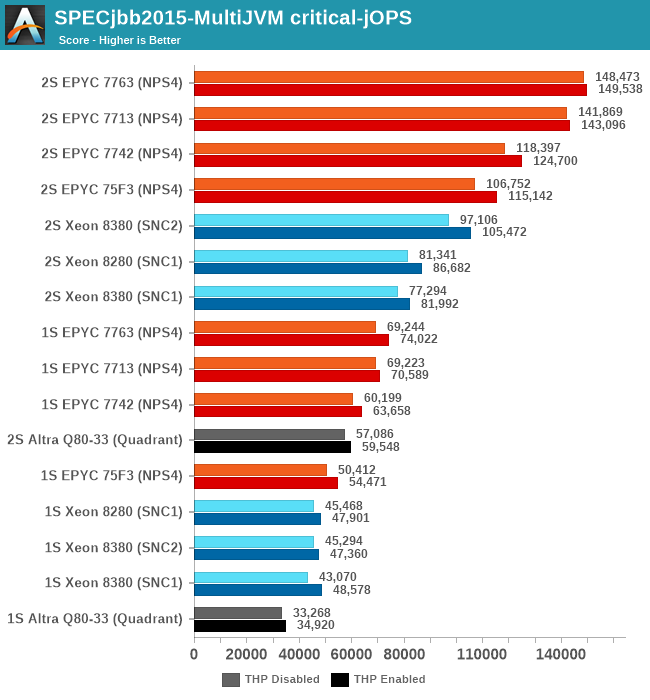
What’s really odd about the results though is that this larger increase only happens in the 2S test figures, with the 1S being unfavourable to the new Ice Lake part, losing to the 8280 in both modes. I had repeated these numbers several times to be sure they’re repeatable, and they were indeed so – as odd as that is. The 1S reduction in the critical-jOPS could be explained through the larger mesh size and larger core count of the 8380, and we did see slight regressions in core-to-core latencies. If the mesh intersection bandwidth did not increase with its size, that also could be a culprit of these figures, as the workload is hammering core-to-core transactions as well as the L3 cache of the chip.
Why the 2S figures see a bigger advantage of migrating to SNC2 could be a result of how on-chip traffic is routed, as well as the traffic flows through the UPI link blocks of the chip – at least that would be my working hypothesis.
Intel had disclosed a +62% figure for a “Java Throughput under SLA” workload they wouldn’t specify, and this does track well with our max-jOPS results. While the critical-jOPS increases seem a bit disappointing generationally, how it translates to the real world in contrast to the max-jOPS figure depends on how strict one’s SLA metrics are.


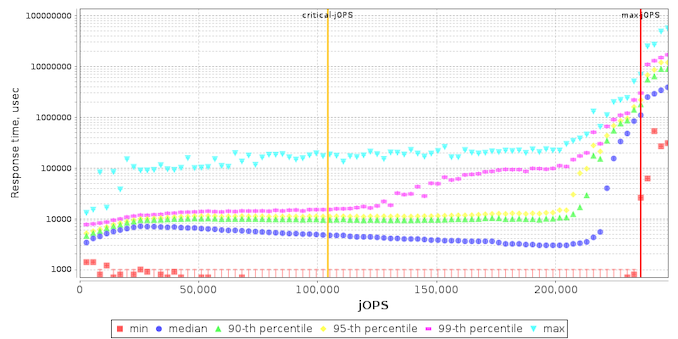
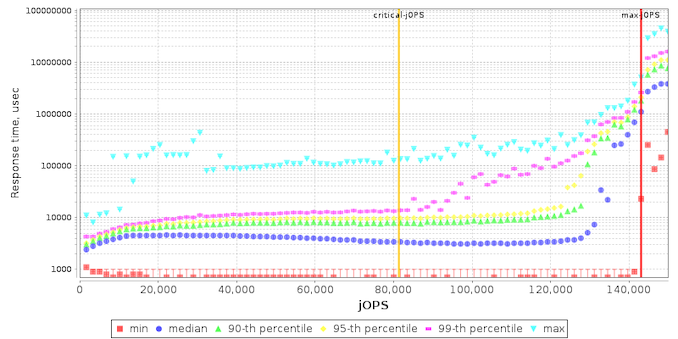
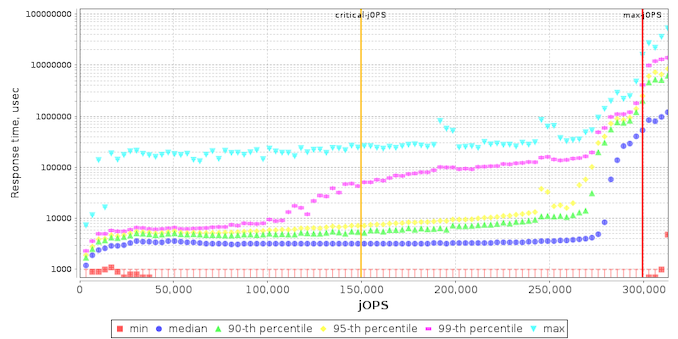
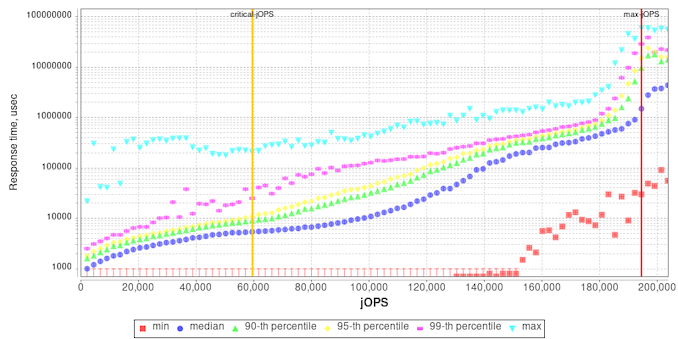








169 Comments
View All Comments
Oxford Guy - Sunday, April 11, 2021 - link
'The faulty logic I see is that you seem to believe it's the review's job to...''I think it could be appropriate to do that sort of thing, in articles that...'
Don't contradict yourself or anything.
If you're not interested in knowing how fast a CPU is that's ... well... I don't know.
Telling people to go for marketing info (which is inherently deceptive — the entire fundamental reason for marketing departments to exist) is obviously silly.
mode_13h - Monday, April 12, 2021 - link
> Don't contradict yourself or anything.I think the point of confusion is that I'm drawing a distinction between the initial product review and subsequent follow-up articles they often publish to examine specific points of interest. This would also allow for more time to do a more thorough investigation, since the initial reviews tend to be conducted under strict deadlines.
> If you're not interested in knowing how fast a CPU is that's ... well... I don't know.
There's often a distinction between the performance, as users are most likely to experience it, and the full capabilities of the product. I actually want to know both, but I think the former should be the (initial) priority.
ballsystemlord - Thursday, April 8, 2021 - link
Spelling and grammar errors (there are a lot!):"At the same time, we have also spent time a dual Xeon Gold 6330 system from Supermicro, which has two 28-core processors,..."
Nonsensical English: "time a duel". I haven't the faintest what you were trying to say.
"DRAM latencies here are reduced by 1.7ns, which isn't very much a significant difference,..."
Either use "very much", or use "a significant":
DRAM latencies here are reduced by 1.7ns, which isn't a very significant difference,..."
"Inspecting Intel's prior disclosures about Ice Lake SP in last year's HotChips presentations, one point sticks out, and that's is the "SpecI2M optimisation" where the system is able to convert traditional RFO (Read for ownership) memory operations into another mechanism"
Excess "is":
"Inspecting Intel's prior disclosures about Ice Lake SP in last year's HotChips presentations, one point sticks out, and that's the "SpecI2M optimisation" where the system is able to convert traditional RFO (Read for ownership) memory operations into another mechanism"
"It's a bit unfortunate that system vendors have ended up publishing STREAM results with hyper optimised binaries that are compiled with non-temporal instructions from the get-go, as for example we would not have seen this new mechanism on Ice Lake SP with them"
You need to rewrite the sentance or add more commas to break it up:
"It's a bit unfortunate that system vendors have ended up publishing STREAM results with hyper optimised binaries that are compiled with non-temporal instructions from the get-go, as, for example, we would not have seen this new mechanism on Ice Lake SP with them"
"The latter STREAM results were really great to see as I view is a true design innovation that will benefit a lot of workloads."
Exchange "is" for "this as":
"The latter STREAM results were really great to see as I view this as a true design innovation that will benefit a lot of workloads."
Or discard "view" and rewrite as a diffinitive instead of as an opinion:
"The latter STREAM results were really great to see as this is a true design innovation that will benefit a lot of workloads."
"Intel's new Ice Lake SP system, similarly to the predecessor Cascade Lake SP system, appear to be very efficient at full system idle,..."
Missing "s":
"Intel's new Ice Lake SP system, similarly to the predecessor Cascade Lake SP system, appears to be very efficient at full system idle,..."
"...the new Ice Lake part to most of the time beat the Cascade Lake part,..."
"to" doesn't belong. Rewrite:
"...the new Ice Lake part can beat the Cascade Lake part most of the time,..."
"...both showcasing figures that are still 25 and 15% ahead of the Xeon 8380."
Missing "%":
"...both showcasing figures that are still 25% and 15% ahead of the Xeon 8380."
"Intel had been pushing very hard the software optimisation side of things,..."
Poor sentance structure:
"Intel had been pushing the software optimisation side very hard,..."
"...which unfortunately didn't have enough time to cover for this piece."
Missing "we":
"...which unfortunately we didn't have enough time to cover for this piece."
"While we are exalted to finally see Ice lake SP reach the market,..."
"excited" not "exalted":
"While we are excited to finally see Ice lake SP reach the market,..."
Thanks for the article!
Oxford Guy - Sunday, April 11, 2021 - link
Perhaps Purch would be willing to take you on as a volunteer unpaid intern for proofreading for spelling and grammar?I would think there are people out there who would do it for resume building. So... if it bothers you perhaps you should make an inquiry.
evilpaul666 - Saturday, April 10, 2021 - link
Are the W-1300s going to use 10nm this year?mode_13h - Saturday, April 10, 2021 - link
You mean the bottom-tier Xeons? Those are just mainstream desktop chips with less features disabled, so that question depends on when Alder Lake hits.I'd say "no", because the Xeon versions typically lag the corresponding mainstream chips by a few months. So, if Alder Lake launches in November, then maybe we get the Xeons in February-March of next year.
The more immediate question is whether they'll release a Xeon version of Rocket Lake. I think that's likely, since they skipped Comet Lake and there are significant platform enhancements for Rocket Lake.
AdrianBc - Monday, April 12, 2021 - link
No, the W-1300 Xeons will be Rocket Lake. The top model will be Xeon W-1390P, which will be equivalent to the top i9 Rocket Lake, with 125 W TDP and 5.3 GHz maximum turbo.rahvin - Tuesday, April 20, 2021 - link
Andre does some of the best server reviews available, IMO.KKK11 - Tuesday, May 11, 2021 - link
That is a curious-looking wafer. I thought it was fake at first but then I noticed the alignment notch. Actually, I'm still not convinced it's real because I have seen lots and lots of wafers in various stages of production and I have never seen one where partial chips go all the way out to the edges. It's a waste of time to deal with those in the steppers so no one does that.